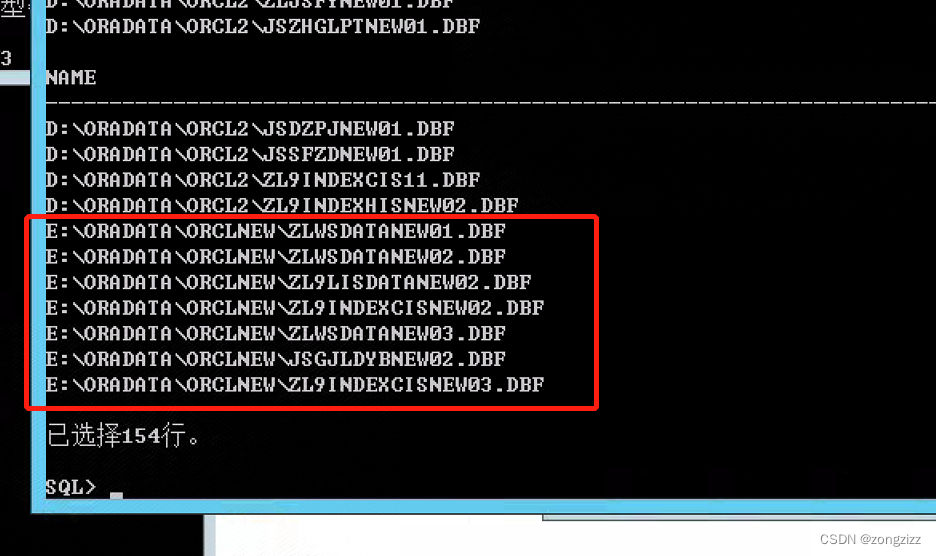About 900 years ago, a Chinese philosopher Sima Guang wrote a history book in which he talked about people's talent and virtue. According to his theory, a man being outstanding in both talent and virtue must be a "sage(圣人)"; being less excellent but with one's virtue outweighs talent can be called a "nobleman(君子)"; being good in neither is a "fool man(愚人)"; yet a fool man is better than a "small man(小人)" who prefers talent than virtue.
Now given the grades of talent and virtue of a group of people, you are supposed to rank them according to Sima Guang's theory.
Input Specification:
Each input file contains one test case. Each case first gives 3 positive integers in a line: N (≤105), the total number of people to be ranked; L (≥60), the lower bound of the qualified grades -- that is, only the ones whose grades of talent and virtue are both not below this line will be ranked; and H (<100), the higher line of qualification -- that is, those with both grades not below this line are considered as the "sages", and will be ranked in non-increasing order according to their total grades. Those with talent grades below H but virtue grades not are considered as the "noblemen", and are also ranked in non-increasing order according to their total grades, but they are listed after the "sages". Those with both grades below H, but with virtue not lower than talent are considered as the "fool men". They are ranked in the same way but after the "noblemen". The rest of people whose grades both pass the L line are ranked after the "fool men".
Then N lines follow, each gives the information of a person in the format:
ID_Number Virtue_Grade Talent_Grade
where ID_Number is an 8-digit number, and both grades are integers in [0, 100]. All the numbers are separated by a space.
Output Specification:
The first line of output must give M (≤N), the total number of people that are actually ranked. Then M lines follow, each gives the information of a person in the same format as the input, according to the ranking rules. If there is a tie of the total grade, they must be ranked with respect to their virtue grades in non-increasing order. If there is still a tie, then output in increasing order of their ID's.
Sample Input:
14 60 80
10000001 64 90
10000002 90 60
10000011 85 80
10000003 85 80
10000004 80 85
10000005 82 77
10000006 83 76
10000007 90 78
10000008 75 79
10000009 59 90
10000010 88 45
10000012 80 100
10000013 90 99
10000014 66 60
Sample Output:
12
10000013 90 99
10000012 80 100
10000003 85 80
10000011 85 80
10000004 80 85
10000007 90 78
10000006 83 76
10000005 82 77
10000002 90 60
10000014 66 60
10000008 75 79
10000001 64 90翻译
大约900年前,中国哲学家司马光写了一本历史书,其中谈到了人的才能和美德。根据他的理论,一个在才能和美德上都出类拔萃的人一定是“圣人”;不那么优秀,但德重天赋,可以称为“君子”;两者都不好是“傻子(愚人)”;然而,一个傻瓜比一个更喜欢天赋而不是美德的“小人”要好。 现在给定一群人的才能和德行的等级,你应该根据司马光的理论对他们进行排名。
输入规范:每个输入文件包含一个测试用例。每种情况首先在一行中给出 3 个正整数:N (≤10^5),要排名的总人数;L(≥60),合格等级的下限——也就是说,只有那些天赋和品德等级都不低于这条线的人才会被排名;H(<100),资格等级较高,即两个等级不低于该线的人被视为“圣贤”,将根据其总成绩按递减顺序排列。
天赋等级低于H但德行等级不低于算“贵族”,也按总等级递减排序,但列在“贤者”之后。
那些两个等级都低于H,但德行高于
然后是N行,每行都以以下格式给出一个人的信息:ID_Number Virtue_Grade Talent_Grade其中ID_Number是一个8位数字,两个等级都是[0,100]中的整数。所有数字都用空格分隔。
输出规范:输出的第一行必须给出 M (≤N),即实际排名的总人数。然后是M行,根据排名规则,每行以与输入相同的格式给出一个人的信息。如果总成绩相等,则必须按不递增的顺序对他们的美德等级进行排名。如果仍然有平局,则按其 ID 的递增顺序输出。
心得:
先是品德再天赋,同分品德越差越后面
“高于”不等于“不低于”!,高于只能是>,但不低于是>=!,不低于可以有等号!
手贱当时翻译的时候将不低于改成高于,害的愚人的输出一直错!
改代码改了半天
不要乱改题目翻译!
还一直让我以为自己的方法究竟出啥问题了一直想不通,差点还得出了容器交换会出现bug,或者无法如此排序,交换函数会出问题,容器得有容器的排序方式的模板等如此诸多结论,真的坑死自己了
对于条件的设定细节一定要谨慎把握,以及题意不要随意改动!如果觉得没问题但部分出错,
你就看看对照原文看自己理解的题意是否偏差,有没有曲解题意,有就要修正
就像细节的不低于--[>=]和高于[>]一样,可以改的我心力交瘁,怀疑人生.
开始的解题过程,方法比较复杂
#include<iostream>
#include<string>
#include<map>
#include<vector>
#include<queue>
#include<algorithm>//结构体的使用,又忘了。
using namespace std;
int n, l, h, m;
/* string id[10010];int tal[10010], vir[10010];*///err//算法原理就是先把所有数据存放在一个数组中,然后分别开不同的容器存放需要的数据
//这些容器就相当于提取pe数组的数据
//缺点就是代码行数太多,循环用的次数太多,其实提取这个步骤是多余的
//而且还要用交换函数,还要特判i,还要删除元素,这些步骤都是没有必要的
//效率也比较低。
//但是不明白为什么是部分正确,不明白提取数组究竟为什么错了。
//方法没有错,错在你乱改了题目意思,将不低于当成高于!struct _data{string id;int tal, vir;};//vector<_data>pe(10010);//这里指的不是下标而是结构体数量的意思//err,这么写交换函数就没有意义了//vector<_data>sage(100010);//10^5是100000,6个数字别大意了!//vector<_data>nobleman(100010);//vector<_data>foolman(100010);//vector<_data>smallman(100010);//容器存放结构体要写()不能写成数组vector<_data>sage;//10^5是100000,6个数字别大意了!vector<_data>nobleman;vector<_data>foolman;vector<_data>smallman;//还有怎么解决数组多余空间问题,就是不能多出,因为多出来为空也会参与排序//因为end没办法,数组必须是满的//用push直接插入容器bool Sort( _data a, _data b)//c++可以把结构体当作类型用,不用*也行{/*return a > b ? a : b;*///写清楚是哪一个量!if (a.tal + a.vir != b.tal + b.vir)//return (a.tal + a.vir) > (b.tal + b.vir) ? (a.tal + a.vir) : (b.tal + b.vir);errreturn (a.tal + a.vir) > (b.tal + b.vir);else if (a.vir != b.vir)//哪个品德更好优先输出,而不是天赋。品德相同天赋更高那就是总分最大的情况//return a.vir > b.vir ? a.vir : b.vir;errreturn a.vir > b.vir;elsereturn a.id < b.id;//还有id顺序别漏了!}//作为排序的判断标准,用bool类型!表示排序依照这个判断排序,不是void!//对于sort排序和bool来说,你不需要"?",只需要给出比大小的符号就行了//倒序就是>,顺序就是<,不需要写判断过程,格式记住!//反思,这么写首先复杂,其次健全性很难维护,各种bug,效率也低int main()
{cin >> n >> l >> h;
vector<_data>pe(n);//结构体容器可以直接用插入的数量//如果要使用pop_back和交换,就要保证容器是满的!
//当然,其他容器就没有必要这么写了,因为他们只负责接收数据,只用变动pe即可
//但是排序的时候算法效率就很低了
//都写满可以提升效率,然后就是避免排序出现未知错误.for (int i = 0; i < n; i++){cin >> pe[i].id >>pe[i].vir >> pe[i].tal;}// int flag = n;err
// 这里不用开个flag,n变就变了,因为你要保证数组都是满的,所以直接改变n使得循环直接到末尾结束即可//不然n一直没动,数组变小了,最后会越界报错!for (int i = 0; i < n; i++){if (pe[i].vir < l || pe[i].tal < l){swap(pe[i], pe[pe.size() - 1]);//交换函数pe.pop_back();n--;//n跟着数组一起变小i--;//这里也要特判,因为调换后的数据很可能就是不合格的,总的来说就是都要特判}}m = n;cout << m << endl;//注意!使用交换函数将后面数组的数据调到前面来了,此时还没有检测调换的数据,// 每一次调换还要检查一下调换后的数据是不是所求数据!//为了防止重复遍历和不必要的代码,每一轮i会增加,只需要这一轮i--即可,这样下一轮//i还是跟上一轮的一样,就相当于对调换后的数据特判!for (int i = 0; i < m; i++){if (pe[i].vir >= h&&pe[i].tal >= h){sage.push_back(pe[i]);//直接要的数据再插入比你创建一堆的容器高效多了swap(pe[i], pe[pe.size() - 1]);//交换函数pe.pop_back();m--;i--;//下一轮特判调换后的数据}}sort(sage.begin(), sage.end(), Sort);//bool类型不用传参就不写()for (int i = 0; i < sage.size(); i++){cout << sage[i].id << " " << sage[i].vir << " " << sage[i].tal<<endl;}for (int i = 0; i < m; i++){if (pe[i].vir >= h && pe[i].tal< h){nobleman.push_back(pe[i]);swap(pe[i], pe[pe.size() - 1]);//交换函数pe.pop_back();m--;i--;}}//sort(Stu.begin(), Stu.end(), SortId); 如果要传三个参数,必须是这个格式!//这是容器必须要的格式,没办法,如果不是容器才可以不写begin,endsort(nobleman.begin(), nobleman.end(), Sort);for (int i = 0; i < nobleman.size(); i++)cout << nobleman[i].id << " " << nobleman[i].vir << " " << nobleman[i].tal<<endl;for (int i = 0; i < m; i++){/*if (pe[i].tal<h&&pe[i].vir<h&&pe[i].vir>pe[i].tal)*///err//篡改题意将不低于改成高于导致部分结果输出错误!if (pe[i].tal < h && pe[i].vir<h && pe[i].vir>=pe[i].tal){foolman.push_back(pe[i]);swap(pe[i], pe[pe.size() - 1]);//交换函数pe.pop_back();m--;i--;}}sort(foolman.begin(), foolman.end(), Sort);for (int i = 0; i < foolman.size(); i++)cout << foolman[i].id << " " << foolman[i].vir << " " << foolman[i].tal<<endl;sort(pe.begin(), pe.end(), Sort);for (int i = 0; i < pe.size(); i++)cout << pe[i].id << " " << pe[i].vir << " " << pe[i].tal << endl;//最后其实就是只剩下小人return 0;
}优化改进算法
//优化算法,可以直接用一个容器,然后找到合适的数据再插入进去,这样排序就会很快了.
//
//优化改进
//首先直接开容器数组更快,更简洁,缺点就是可读性差了一点
//其次直接在一个循环中,用if来插入数据,省去没有必要的提取数组数据
//所以以后针对一堆数据分不同类的排列的,直接在一个循环中每一条数据都判断放在哪里即可
//省去大量多余的循环,以及双循环直接简洁输出,大大优化简洁度和可读性,还有反反复复重复写的排序算法
//这些都是没有必要的!#include<iostream>
#include<string>
#include<map>
#include<vector>
#include<queue>
#include<algorithm>//结构体的使用,又忘了。
using namespace std;
int n, l, h, m;struct _data
{string id;int tal, vir;
}mydata;//直接给结构体命名,就相当于自己建立了一个新的结构体
//如果没命名你就要自己新建一个!
//如struct _data s
//因为_data属于一种类型,不能直接使用,表示为结构体就需要一个名字vector<_data>v[5];bool Sort(_data a, _data b)//c++可以把结构体当作类型用,不用*也行
{/*return a > b ? a : b;*///写清楚是哪一个量!if (a.tal + a.vir != b.tal + b.vir)//return (a.tal + a.vir) > (b.tal + b.vir) ? (a.tal + a.vir) : (b.tal + b.vir);errreturn (a.tal + a.vir) > (b.tal + b.vir);else if (a.vir != b.vir)//哪个品德更好优先输出,而不是天赋。品德相同天赋更高那就是总分最大的情况//return a.vir > b.vir ? a.vir : b.vir;errreturn a.vir > b.vir;elsereturn a.id < b.id;//还有id顺序别漏了!}
//作为排序的判断标准,用bool类型!表示排序依照这个判断排序,不是void!
//对于sort排序和bool来说,你不需要"?",只需要给出比大小的符号就行了
//倒序就是>,顺序就是<,不需要写判断过程,格式记住!int main()
{cin >> n >> l >> h;//for (int i = 0; i < n; i++)//{// cin >> pe[i].id >>pe[i].vir >> pe[i].tal;//}数据分很多排列方式,没有必要先全部插入一个数组//struct _data mydata;如果不命名就要自己新建一个int m = n;//标记当前m的大小for (int i = 0; i < n; i++){cin >> mydata.id >> mydata.vir >> mydata.tal;//直接插入结构体,然后if判断插入容器if (mydata.vir < l || mydata.tal < l){m--;//实际数据大小continue;//不满足条件的直接到下一次循环,相当于直接舍弃}if (mydata.vir >= h && mydata.tal >= h)v[0].push_back(mydata);else if (mydata.vir >= h && mydata.tal < h)v[1].push_back(mydata);else if (mydata.tal < h && mydata.vir<h && mydata.vir>=mydata.tal)v[2].push_back(mydata);elsev[3].push_back(mydata);}cout << m << endl;for (int i = 0; i < 4; i++)//排序加输出{sort(v[i].begin(), v[i].end(), Sort);for (int j = 0; j < v[i].size(); j++){//cout << v[i].id << " " << v[i].vir << " " << v[i].tal << endl;err//你要同时明确首先是在哪个容器,其次就是容器中对应的哪一组内容,//一个容器里也存在着多组数据,不明确怎么输出?cout << v[i][j].id << " " << v[i][j].vir << " " << v[i][j].tal << endl;}}return 0;
}




